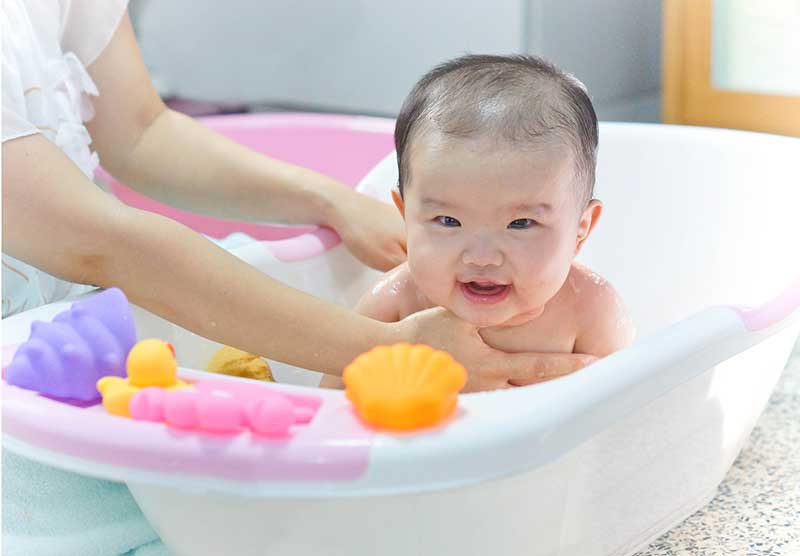Families For Life | Family Rules-Toddlers

Household rules let everyone in the family know how to behave. They help family members achieve a balance between getting what they want and respecting the needs of others. They can also help children and teenagers feel safe and secure.
Family rules: the basics
Family rules are positive statements about how your family wants to look after and treat its members. Rules can help everyone in your family get along better, and make family life more peaceful.
When rules are clear, they help:
children and teenagers learn where the limits are, and what’s expected of them
adults be consistent in the way they treat children and teenagers.
Who to involve in making rules
It’s important to involve all members of the family as much as possible when developing family rules.
Children as young as three can help you make the rules and talk about why your family needs them.
As children get older, they can take a bigger part in deciding what the rules should be, as well as the consequences for breaking them. Pre-teens and teenagers get a lot of good out of being involved in making rules, because it gives them the chance to take responsibility for their own behaviour.
Involving your child in creating both the family rules and the consequences for breaking them helps her understand and accept them.
What to make rules about
Choose the most important things to make rules about – for example, a rule about not physically hurting each other would be a must for most families.
You might also develop rules about safety, manners, screen use, daily routines and respect for each other.
Every family’s rules will be different. The standards you create will be influenced by your beliefs, values, your situation and your child’s maturity and needs.
Kinds of rules
Rules come in different shapes and sizes. But all good rules have something in common: they are specific and easy to understand.
‘Do’ rules
‘Do’ rules are good teaching tools, and they’re best in most situations because they guide your child’s behaviour in a positive way. Here are some examples:
Sit down to eat
Speak in a polite voice
Wear your seatbelt in the car
Be gentle with each other
Be home by curfew
It’s best to have more ‘do’ than ‘don’t’ rules.
‘Don’t’ rules
Use ‘don’t’ rules when it’s difficult to explain exactly what to do instead. Here are some examples:
Don’t spit
Don’t ask for things in the supermarket
Don’t get in a car with a P-plater or any other driver who has been drinking
Ground rules
These are rules that apply everywhere, no matter what. Some ground rules might apply to the whole family, whereas others might apply just to younger children or to teenagers. Rules about being polite and not hurting each other are examples of ground rules.
Situation rules
Sometimes it can help to have a short set of rules for specific situations. For example, you might have rules for:
travelling in the car
visiting another person’s house
using the computer
going shopping.
A few clear and specific rules usually work better than a long list, especially for younger children. As children get older and more mature, the rules can ‘grow’ along with them. If your child tends to break the rules, you might need to choose your battles and focus on basic issues like safety and fairness.
How to develop rules
Children and teenagers like to be involved in the rule-making process.
Taking part in discussions about rules won’t necessarily stop young people from breaking them. But it will help them understand what the rules are and why they’re needed.
Many families find it helps to write down a set of rules about how family members are expected to behave. Writing them down makes them clear and can also prevent arguments about what is or isn’t allowed. Sticking the rules on the fridge, or in another prominent spot, can help younger children be aware of them.
Written rules are also helpful for teenagers. For children of this age, instead of making the rules public by sticking them on the fridge, it’s a good idea to keep them somewhere a little more private that’s still handy for when you need to refer to them.
For younger children, consider drawing pictures or putting together images from the internet that show the rules. Then put the pictures up in a place everyone can see them. If you involve children in drawing or colouring the poster, it gives you a chance to discuss the rules with them.
When to start making rules
You can start making simple rules as soon as your child has the language skills to understand them. This is part of teaching your child what you expect.
Young children will need support and reminders to follow rules, because they’re likely to forget or ignore rules. This is especially important with safety rules like ‘Stay away from the stove’ and ‘Never touch the matches’.
Some children with special needs might also need help to understand and remember rules.
All children are different, but it might be middle to late primary school age before you can start relying on them to follow rules without your help in most situations.
Clear rules and boundaries will help to give your teenage child a sense of security and let her know where she stands. This is especially important during adolescence, when so many other things in your child’s life are changing.
Teenagers and rules
The teenage years present a new challenge. At this stage, young people might push for more autonomy and independence. This can sometimes involve challenging the family rules, especially if your child feels torn between your family’s rules and his friends’ expectations.
But rules are just as important for teenagers as they are for younger children, and it’s never too late to create or reinforce them. Involving your teenage child in creating family rules can help her feel that you listen to her and she can contribute. She’ll also be more likely to see you as fair and stick to the agreed rules.
Rules about safe behaviour are likely to help you and your child. These might include rules about alcohol use, sex, dating and curfews. Some families negotiate and sign safety contracts. A safety contract is a written agreement that outlines the rules – for example, ‘Text when you’re using public transport at night’ or ‘Talk to a trusted adult if someone sends you a pornographic image’.
Be willing to discuss and adjust rules as your child gets older – for example, by extending your child’s curfew.
What to do when children don’t follow the rules
When children break the rules, you might choose simply to remind them of the rules and give them another chance.
But it will ultimately be more effective to use consequences for breaking rules.
It’s best to talk as a family about consequences when you’re making the family rules. This can ensure that everyone understands and agrees on the consequences from the start. And if everyone understands and agrees, it can be easier to put consequences into action when children break the rules.
© raisingchildren.net.au, translated and adapted with permission
Explore more

DID YOU KNOW?
Bath time is a good way to soothe your baby but it can also be a fantastic learning opportunity for your child. Learn how you can engage him during bath time.
READ MORE